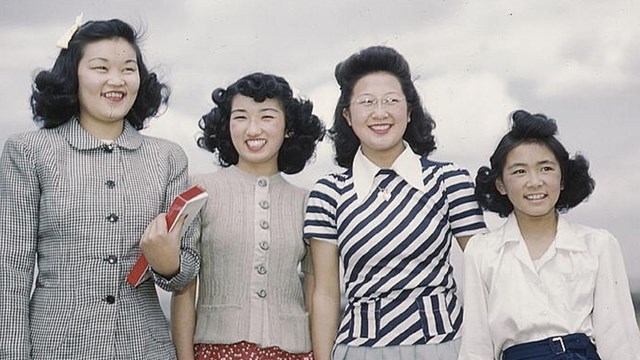
NPS photo, courtesy Manzanar National Historic Site.
About
Asian American and Pacific Islander history and heritage are as vast as the many countries and nations that make up this demographic.
These histories reflect more than a thousand years of Asian American and Pacific Islander heritage. As of 2024, over 20 million people of Asian or Pacific Islander descent live in the United States, totaling about 6 percent of the US population. Throughout this site, you can find stories of Asian American and Pacific Islander history and heritage from early Pacific Islander cultural centers to the fight for civil rights and political recognition.
As the nation’s storyteller, the National Park Service strives to tell the stories of ordinary and extraordinary Asian Americans and Pacific Islanders preserved in our nation’s parks, memorials, and historic sites. Come learn with us today!
What’s In a Name
There is no one answer or rule to tell us how we should refer to people of Asian American and Pacific Islander heritage. The question of whether to use various acronyms from Asian American and Pacific Islander (AAPI), Asian Pacific American (APA), Asian American Native Hawaiian Pacific Islander (AANHPI), or something else has been increasingly debated in our communities. Many individuals express their own preference.
For consistency throughout the National Park Service Asian American and Pacific Islander subject site, we will:
- Use ethnic group specific names, when possible, like Chinese American or Indian American.
- Recognize the variations within communities, such as Filipinx (some use “-x” suffix to be inclusive of gender; also in critical studies) versus Filipino and Filipino American.
- Primarily use “AAPI” following the Asian American and Pacific Islander National Landmarks Theme Study, but content across National Park Service webpages may vary.
- Recognize the agency and autonomy of communities that prefer different naming conventions and groupings that may change over time.
From New York to Hawai’i: Asian American and Pacific Islander Heritage Is Everywhere

One of 10 relocation camps built to house people of Japanese descent forcibly relocated from the West Coast of the US during World War II.

Learn more about the history and culture of Asian Americans and Pacific Islanders through this National Park Service theme study.

Born in 1861 at Lihue, Kauai in the Kingdom of Hawaii, Wilhelmina Kekelaokalaninui Widemann was a suffragist.

Mabel Lee advocated for women's suffrage rights. She was also the first Chinese woman to earn a PhD in economics from Columbia University.

Explore American places associated with AAPI individuals and communities.

This volume explores "place" as a crucial variable in locating Asian Americans & Pacific Islanders in the history of the American empire.
Asian American and Pacific Islander Stories Are Abundant
Last updated: May 3, 2024
